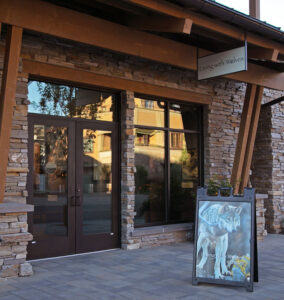How Wolves Help
Wolves play a very important role in the ecosystems in which they live. Since 1995, when wolves were reintroduced to the American West, research has shown that in many places they have helped revitalize and restore ecosystems. They improve habitat and increase populations of countless species from birds of prey to pronghorn, and even trout. The presence of wolves influences the population and behavior of their prey, changing the browsing and foraging patterns of prey animals and how they move about the land. This, in turn, ripples throughout plant and animal communities, often altering the landscape itself. For this reason wolves are described as a “keystone species,” whose presence is vital to maintaining the health, structure and balance of ecosystems.
Without Wolves
1926-1995
ELK, no longer pressured by predatory wolves, became abundant and began to damage their own habitat. Having lost the fear of being hunted, elk gathered near streams, overbrowsing aspens, willows, cottonwoods, and shrubs that grow on banks and prevent erosion. Habitat for fish, amphibians, and reptiles declined as waters became broader, shallower, and warmer without shade from streamside vegetation. Elk populations were so out of control that park rangers began to kill and relocate elk in large numbers in an attempt to reduce their burgeoning population.
ASPENS seldom reached full height in Yellowstone’s northern valleys, where elk winter. Browsed by elk, the new sprouts and shoots were eaten, and existing trees were stunted. Along streams and around wetlands willows and cottonwoods were also not regenerating as effectively under heavy browsing pressure from elk. Fewer young trees meant songbirds lost nesting space. Beaver populations decreased as they rely on this vegetation to survive. At one point, only one beaver colony was living in the park.
COYOTES, no longer having to share the land with wolves, became much more abundant and one of the park’s top predators. But the coyote’s small size kept them from regulating the park’s large ungulate populations, like wolves do. Though coyotes will kill elk calves, they prey mainly on pocket gophers, voles, and other small mammals. They also specialize in killing the fawns of pronghorn. The lack of carcasses left behind by wolves reduced the food traditionally available for foxes, badgers, raptors, coyotes and other scavengers.
With Wolves
1995-Present
ELK, the primary prey of wolves in Yellowstone, have decreased in numbers within the park. Other factors such as drought, severe winters, and other large predators have also contributed to the decline in Yellowstone elk. But as wolves returned, the behavior of elk changed; elk became more vigilant and were once again forced to stay on the move. Vulnerable along the rivers and streams, elk now spend more time in denser cover or on higher ground with better vistas for spotting predators. Consumption of vegetation by elk is thus restrained, giving many riparian areas a chance to recover.
ASPENS, willows, cottonwoods, and other vegetation have in many places resumed their natural growth. When their favorite food and building material reappeared, beavers flourished, engineering broad wetlands that attract frogs, swans, and sandhill cranes. Stream banks once picked clear of vegetation and eroded by hooves erupted in wildflowers, which nourished insects, which in turn fed songbirds that nested among the thick willows. The water below now became shaded, deep, cool, and clear—a better habitat for aquatic-born insects and trout.
COYOTE numbers dropped as they once again share the land with wolves. Many coyotes were killed or driven away by wolves, helping to bring about a resurgence in pronghorn. A drop in coyotes leaves more gophers, and other rodents for foxes, raptors, and other mid-level carnivores.
WOLVES, now returned to their original habitat, play a vital role in keeping the world of predator and prey in balance. Once they’ve eaten their fill, the leftovers from their kills provide food for scavengers, including bald and golden eagles, magpies, coyotes, ravens, and bears.
TO LEARN MORE ABOUT THE ROLE WOLVES PLAY IN ECOSYSTEMS read more
Wolves Strengthen Ungulates
Wolves cull sick, old and genetically inferior elk and deer, allowing the healthiest individuals to breed and perpetuate their species.
Wolves Feed Other Animals
The remains of a carcass left behind, unfinished by wolves, help feed grizzly bears, bald eagles, wolverines and many other scavengers.
Wolves Improve Riparian Areas
Wolves have redistributed the elk herds, allowing vegetation to recover along rivers and streams. More willows and aspens provide food for beavers. More beaver ponds benefit aquatic plants and animals. Shade from the trees cools the water, making the habitat better for trout.
Wolves Decrease Coyote Populations
Wolves kill coyotes, so rodent populations increase, benefiting struggling birds of prey. Also, with fewer coyotes, pronghorn antelope calves are less likely to be preyed upon.
Wolves Boost Ecotourism
The reintroduction of wolves to Yellowstone has attracted 150,000 new visitors each year, adding $35-million to the local economy annually.

